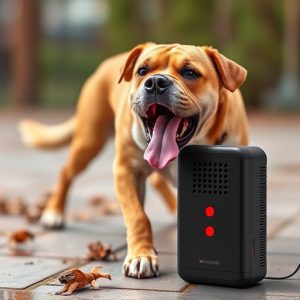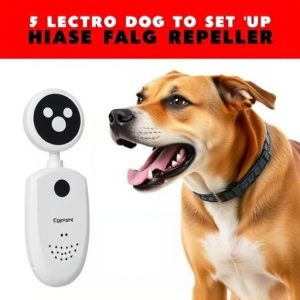Electronic Dog Repellent: Effective Frequency Range & Safety Certifications
Electronic dog repellents, using sound frequencies (3-5 kHz) within safe ranges, are a humane altern…….
Electronic dog repellents, using sound frequencies (3-5 kHz) within safe ranges, are a humane alternative to traditional methods. Reputable manufacturers adhere to Electronic Dog Repellent Safety Standards Certifications like UL or CE to protect dogs and humans. When selecting a repellent, consider frequency range, breed sensitivity, and safety features like ground fault protection for optimal effectiveness and security.
“Unleash a humane and effective solution to unwanted canine intrusions with electronic dog repellents. This comprehensive guide explores the science behind these devices, delving into their operating frequency ranges, which play a pivotal role in their success. We’ll navigate safety standards and certifications, ensuring peace of mind when using such products. Additionally, discover key considerations for choosing the ideal dog repellent, focusing on both efficacy and user safety.”
- Understanding Electronic Dog Repellents: How They Work and Their Frequency Range
- Safety Standards and Certifications for Dog Repellers: Ensuring Effective and Safe Use
- Choosing the Right Dog Repellent: Considerations for Effective Frequency Range and User Safety
Understanding Electronic Dog Repellents: How They Work and Their Frequency Range
Electronic dog repellents have gained popularity as a humane and effective solution to deterring unwanted canine behavior. These devices operate by emitting specific sound frequencies that are unpleasant to dogs, encouraging them to stay away from treated areas. Unlike traditional repellents, they offer a safe and non-toxic approach to managing dog interactions.
The frequency range of these electronic repellents is a key factor in their effectiveness. Reputable manufacturers adhere to safety standards and certification guidelines to ensure the emitted sounds are within a safe auditory range for both dogs and humans. This typically ranges from 3 to 5 kHz, frequencies that are above the normal hearing range for humans but within the sensitive auditory spectrum of dogs. Such repellents are designed to minimize any potential harm while effectively communicating with canines.
Safety Standards and Certifications for Dog Repellers: Ensuring Effective and Safe Use
When it comes to electronic dog repellents, ensuring safety is paramount. Repelling dogs through sound or other methods requires adherence to stringent Safety Standards and Certifications to protect both animals and users. These standards guarantee that devices emit safe frequencies and intensities, avoiding potential harm to canine hearing or human well-being.
Reputable manufacturers often seek certifications from recognized bodies, such as UL (Underwriters Laboratories) or CE (Conformité Européenne), ensuring their products meet international safety guidelines. Always opt for electronic dog repellents that bear these certifications, guaranteeing a humane and safe approach to deterring unwanted canine intruders.
Choosing the Right Dog Repellent: Considerations for Effective Frequency Range and User Safety
Choosing the right electronic dog repellent involves careful consideration of its frequency range, ensuring it falls within the effective spectrum to deter dogs. Different breeds and sizes of dogs have varying sensitivity levels to specific frequencies, so a versatile range is ideal. Look for repellents with adjustable settings to customize the intensity according to your needs. Safety should also be a top priority when selecting an electronic dog repellent. Reputable brands adhere to strict Electronic Dog Repellent Safety Standards and obtain relevant certifications. These ensure that the device is safe for both pets and humans, avoiding any potential harm from electric shocks or over-stimulation. Always check for safety features like ground fault protection and warning indicators to guarantee user safety during operation.
When selecting an electronic dog repellent, understanding its frequency range and adhering to safety standards and certifications is paramount. By considering these factors, pet owners can effectively protect their spaces without compromising their pets’ well-being. Remember, the right repellent not only keeps dogs away but also ensures a safe and harmonious environment for all.


